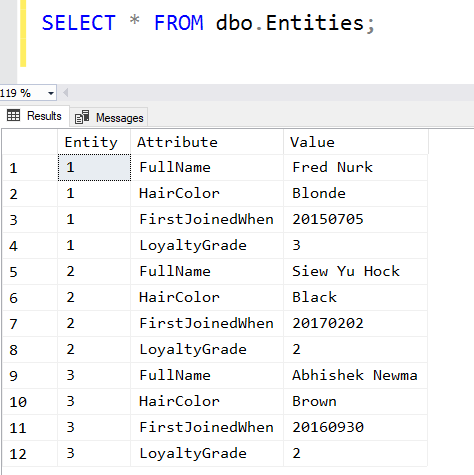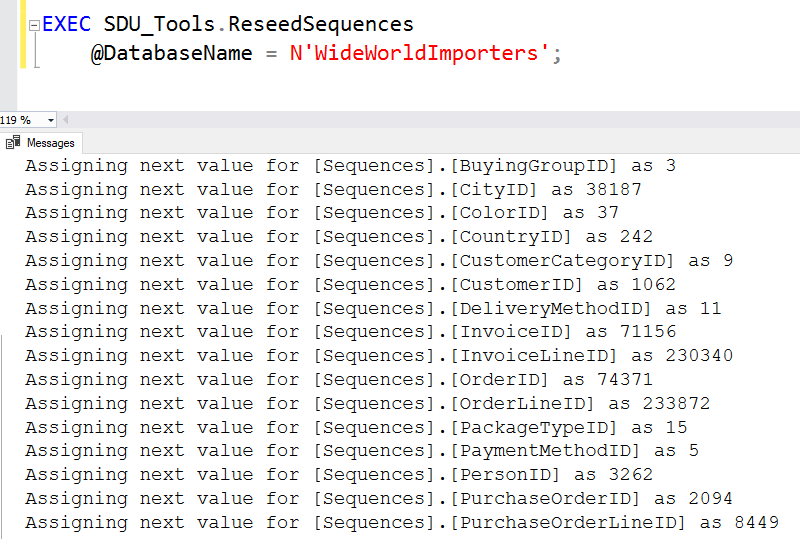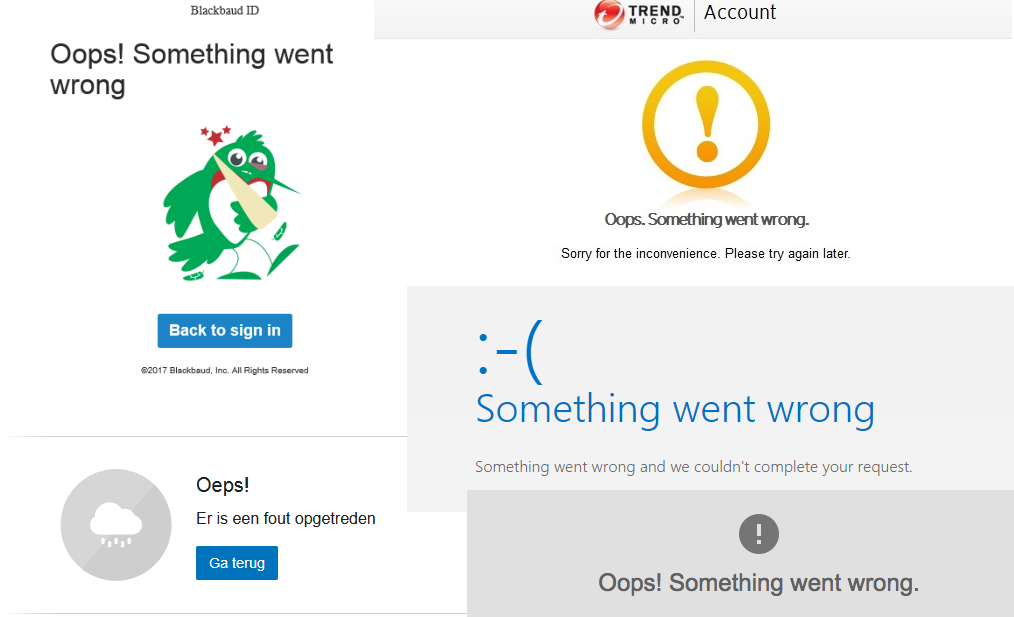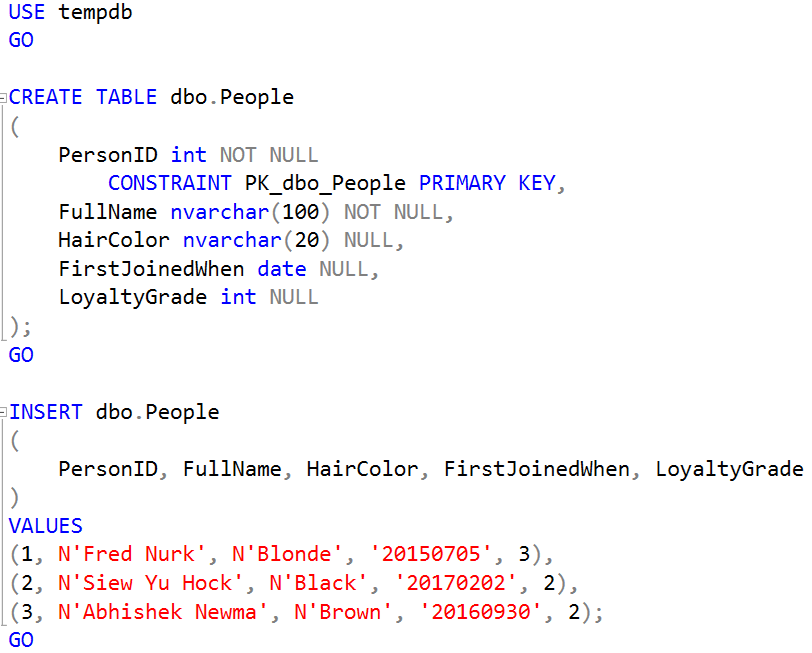
SQL: Design – Entity Attribute Value Tables (Part 2) – Pros and Cons
In an earlier post, I discussed the design of EAV (Entity Attribute Value) tables, and looked at why they get used. I’d like to spend a few moments now looking at the pros and cons of these designs.
Let’s use the same table as the last time as an example:

Pros
The main positive that’s typically described is that the schema is “flexible”. By this, the developers usually mean “I don’t have to change the database schema (or worse, have someone else change it) when my needs change”.
2018-02-19


 Image by Markus Spiske
Image by Markus Spiske







